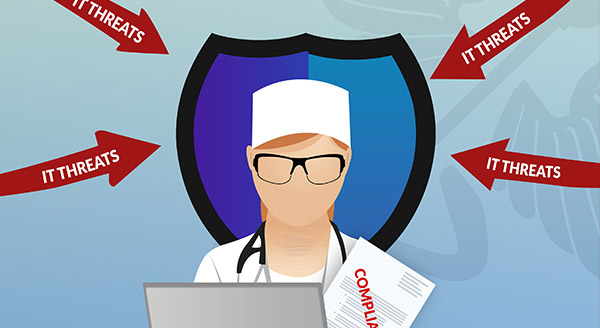

In layman’s terms Two-factor authentication (2FA) can be thought of as “something you have, and something you know”. Essentially it is a security protocol that gives the data on your network an added layer of data protection by requiring users to verify their identity twice when logging on to their user account. Single-factor authentication is generally accomplished by entering a password at login, but 2FA asks for a second bit of data to further verify the user’s identity. This could be accomplished in one of several ways:
Depending on what type of business you conduct, a user name and password just might not be secure enough for some transactions. For financial, legal, medical, or other sensitive and confidential data, your clients may depend on your ability to adequately defend their information against any threat.User names and passwords alone are too easily compromised. Some people have a hard time remembering passwords, and so may jot them down in places where they can be accessed by anybody. If their password is not changed on a regular basis, or if it is too easy to figure out, it won’t take much effort for a motivated hacker to gain access. Two-factor authentication may provide the reinforcement you need to ensure your data is safe, by asking for input that only that user can provide, thus ensuring
Two-factor authentication asks for input from two different categories – such as one knowledge factor and one biometric factor, or first a user name/password combination, followed by a voice print or fingerprint scan. Many industries have been hesitant to deploy a 2FA standard, and those that have in the past have developed the impression that it impedes workflows and makes the sign-in protocol difficult to manage for their IT teams. On the customer-facing side, it is often deployed to mixed reviews: clients may know that it is important in terms of the extra security it provides, but may not appreciate the bother of signing in twice. This created a need for the technology to be more accessible and user-friendly, a need that has been met by a multitude of security-specialist app developers, such as Australia’s Token One.
2FA providers like Token One use an encryption technique called one-time pad, also known as OTP. OTP is essentially a crypto algorithm that encrypts a message using a randomly generated key that is matched to a one-time pad and key which is never repeated twice. Since OTP is not based on algorithms, it is not vulnerable to hacking and is widely considered to be uncrackable. In one form or other, it has been in use since WWII, where it was used to transmit secret messages and in espionage. The intrinsic reliability of OTP is what led developers to shape it into its current technological form, which is now leveraged by a multitude of cyber-security developers. With today’s tech security challenges and all of its implied perils, there has never been a more needful time to bring these solutions to market.
Deploying a robust 2FA protocol such as Token One is simply a smart choice. If you are in an industry such as healthcare, education, the public sector, legal, or financial, and you are not yet using a 2FA protocol or if your current 2FA system is not living up to its promise, Greenlight can help. Call today to speak to one of our technicians about Token One, and how it can help protect your company from whatever comes next.